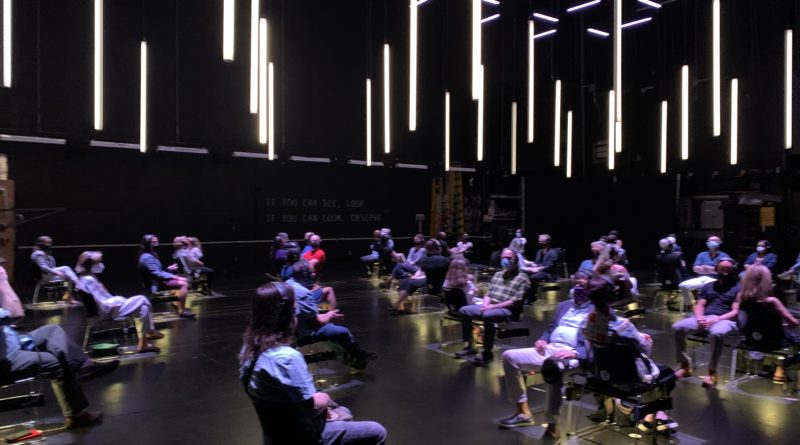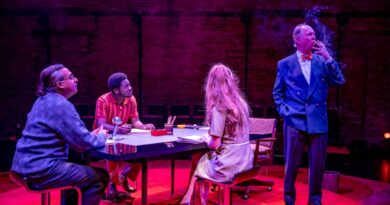Upside-down and perfectly of this pandemic moment: Mirvish’s presentation of “Blindness” enthralls
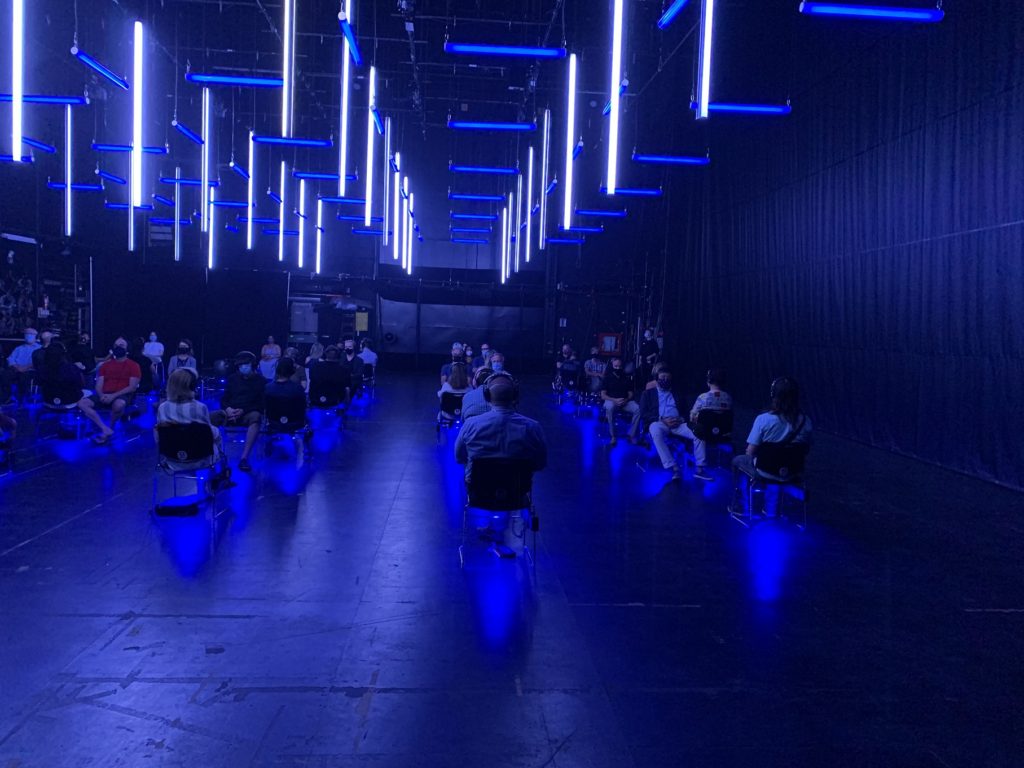
The world feels upside-down.
It has since the start of the pandemic, of course. And nowhere more so than in the shuttered or streamed-only world of live performance arts.
So it’s big news that Mirvish has brought the Donmar Warehouse production of Blindness, Toronto’s first major indoor performance in 17 months, to the Princess of Wales Theatre. Award-winning playwright Simon Stephens (The Curious Incident of the Dog in the Night-time, for which he won both the Tony and Olivier awards for best play) has adapted Nobel Prize-winner José Saramago’s dystopian novel Blindness as a sound installation directed by Walter Meierjohann with immersive binaural sound design by Ben and Max Ringham
Is the world finally righting itself? Maybe . . . but hang on . . .
There are just 50 of you attending the show. There’s no crush of people outside or in the lobby. When your ticket is scanned, you are pointed to a decal circle on the lobby floor with your seat numbers on it. There you wait, until you can be personally ushered – not into the audience, but onto the stage, where your seats are located.
Upside-down.
The curtain to the auditorium is closed at right. On the wall opposite appears the novel’s epigram in chalky white letters: “If you can see, look. If you can look, observe.” You’re on the stage, but it feels more like you’re backstage.
Upside-down.
Unlike the usual communal theatre experience, you and your partner share a two-seater distanced carefully from other two-seaters and single seats. You are beside each other, yet you face in opposite directions, looking at other distanced audience members.
This will be a solitary, not a communal experience. Upside down.
You put on your headphones. As the show begins, glowing horizontal lightsticks descend from the ceiling to near eye level, creating a glowing barrier that bisects your view of others and reinforces the distancing.
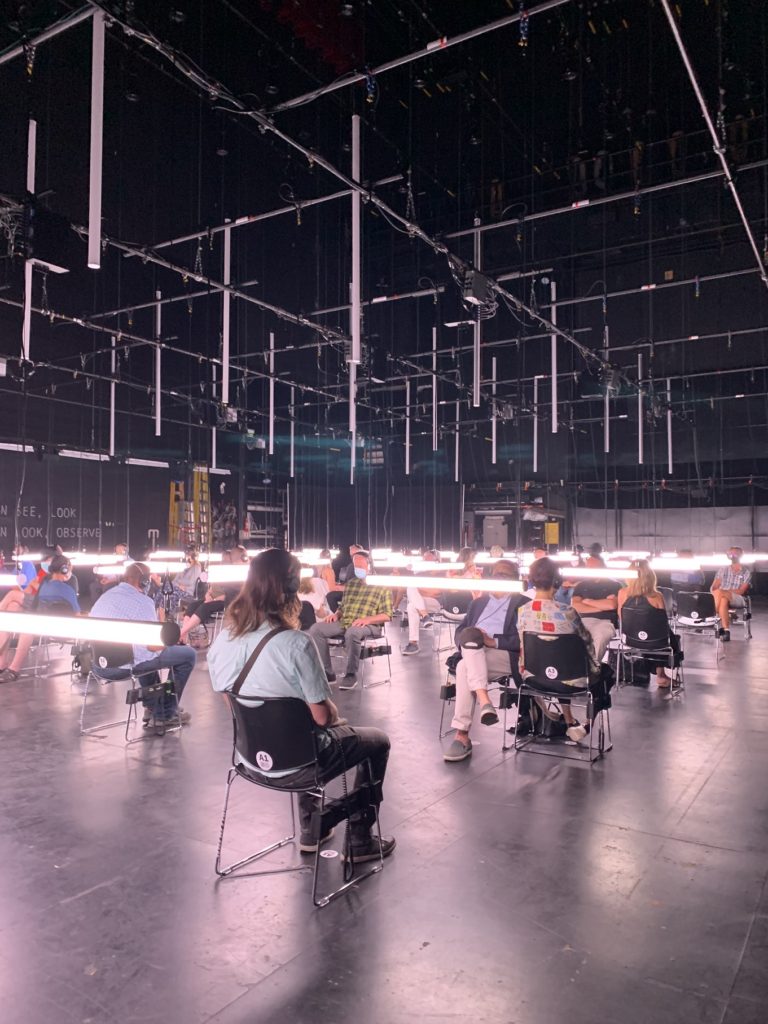
Actor Juliet Stevenson’s voice expressively conjures you into the middle of a city intersection. where a driver, suddenly and inexplicably blind, has stopped his car. This event is at once distressing and banal. He is a doctor immobilized in terror because his world has gone white. He is also an irritant to the oblivious/ traffic around him.
The blindness is infectious, it seems. The narrator contact traces the spreading contagion and describes the government’s efforts to contain and quarantine the growing hordes of the blind. They are a distressingly familiar several step behind. The extremity of the unfolding tale conjures images from post-apocalyptic pandemic tales like The Walking Dead.
At a certain moment – it’s hard to register exactly when – Stevenson is no longer the narrator, and you are no longer the audience. She is now the doctor’s wife, and you are the blinded doctor. In total blackness now, you rely on her to tell you what is going on, and to take any needed initiative – after all, she is the only person who can see.
It’s harrowing. It’s visceral.
Theatre is usually a live visual experience where actors move, speak and create before – and for – our eyes. But in this moment, theatre is a recorded, auditory experience. The sole actor is in your ears. In your head.
Upside-down.
The sound installation is genius. In pitch darkness, sound comes from the headphones if the doctor’s wife speaks to you from nearby, or whispers creepily in your left ear. You reach out a hand, but (of course) she’s not really there. At other times, Stevenson’s voice is an emotional orchestra symphonically conjuring action all around you from the speakers that surround the stage.
Upside-down and then . . . sideways. Because as the story winds to its gratifyingly (and surprisingly) uplifting close, the norms and rules of this experience seem to break down.
Your eyes strain as light returns in fits and starts. The vast and empty Princess of Wales Theatre itself becomes a spectral character in this psychic netherspace.
You can look, so you strain to observe. And because you observe, you also reflect.
What IS this thing – this “sound installation” conjuring a pandemic in the midst of our actual pandemic? This theatrical performance that inverts the normal hierarchy of sight and sound, the live and the recorded? This liminal experience that straddles and subverts mind and body?
Well, it’s a gripping yarn. A unique, unsettling, uplifting experience. An occasion for meditating on what we’ve been missing – and what we may yet get back.
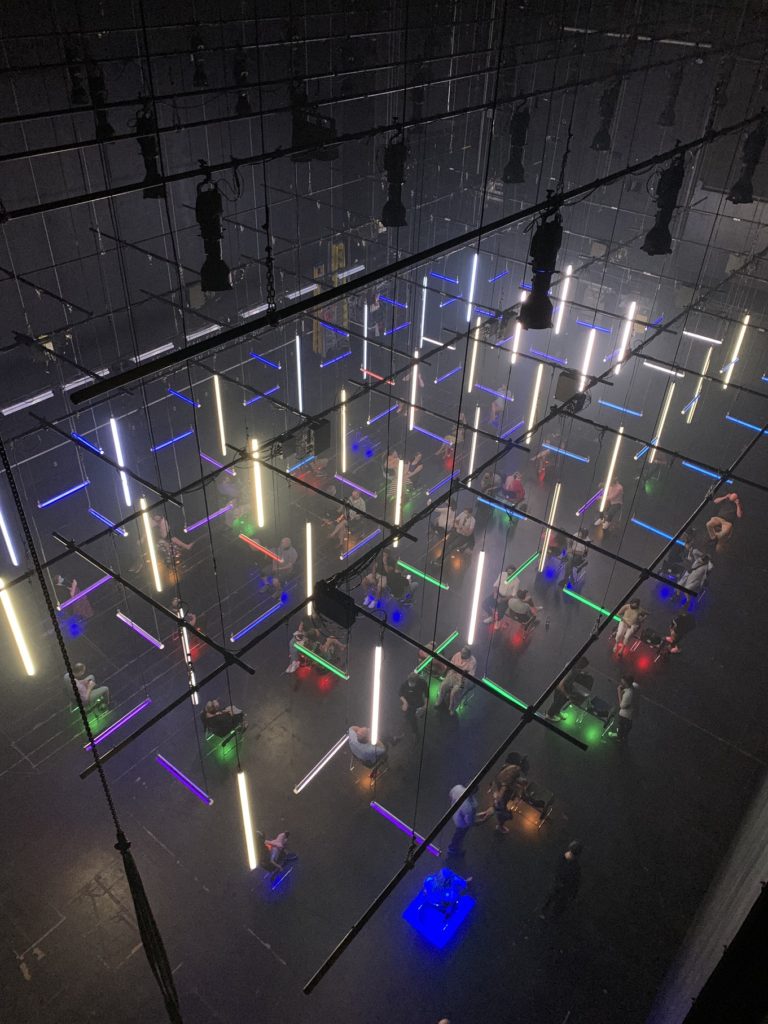
And it’s not over when Stevenson’s narration ends and the lights come up. As you walk out, King Street is dotted with businesses that have closed during the pandemic. Patios are partially filled, and the sidewalks are dotted with walkers, but not filled with bustling crowds. You and Toronto itself are like the city in the show emerging from its blindness.
Blindness is utterly and perfectly of this moment: a mysterious, aching metaphor for the disorienting place where we find ourselves as we look tentatively ahead to a time – and a theatre – after COVID-19.
We haven’t been here before.
We can look, so we should observe.
Blindness runs until August 29, 2021. Click here to book tickets.
© Scott Sneddon, SesayArts Magazine, 2021
About The Author
Scott Sneddon
Scott Sneddon is Senior Editor on SesayArts Magazine, where he is also a critic and contributor.
Visit About Us > Meet the Team to read Scott’s full bio …

